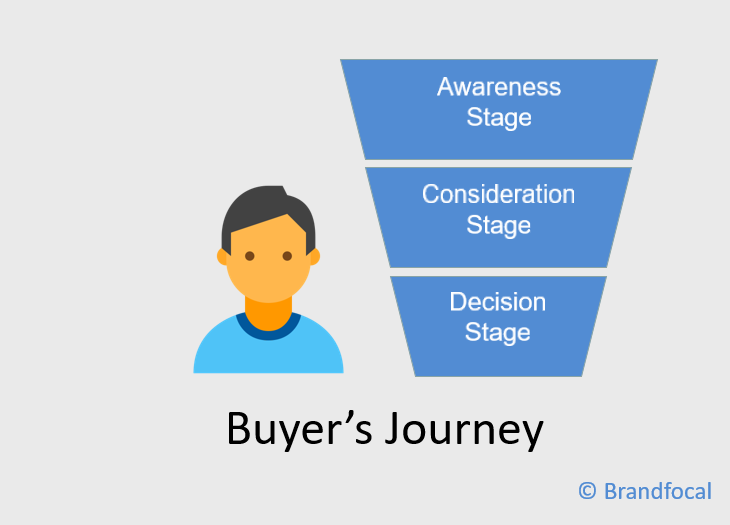Customers today have more access to information than ever before to compare products and services that are being offered in the marketplace. This is true regardless of the industry.
Still, by asking the right questions and then delivering the answers during each stage of the buyer’s journey, a business can raise the quality of their leads and get a better return on their marketing efforts.
It is important to first learn the three stages of any buyer’s journey:
- Awareness Stage: The buyer becomes aware that they have problem that they need to address.
- Consideration Stage: The buyer defines their problem and considers options to solve it.
- Decision Stage: The buyer evaluates and decides on the right provider to solve the problem.
Note: Many businesses focus their marketing efforts at the bottom of the buyer’s journey and try to reach customers when they are ready to make a purchase decision.
Let’s not forget that there are many opportunities to educate a customer higher up in their journey. Interestingly, about 96% of your website visitors are not even in the decision stage.
By learning about their pain points and supplying your prospect with relevant information early on, you can later present yourself as the solution to their problem when they are ready to make a purchase decision.
Do not confuse buyer’s journey with a sales funnel.
These terms can be confusing because they describe the same process but from different points of view.
A sales funnel is a business-centric approach that focuses on company goals.
On the other hand, the buyer’s journey is consumer-centric and focuses on a buyer’s distinct needs.
Sales funnel aims to convert visitors into leads into customers, whereas buyer’s journey represents the path a prospect takes from interest to purchase.
- How to Build a GoHighLevel Funnel: A Step-by-Step Guide - February 13, 2025
- Designing a Healthy Online Presence: Medical Website Design and SEO - February 3, 2025
- Confluence vs. SharePoint: Which One is Right for You? - February 2, 2025
